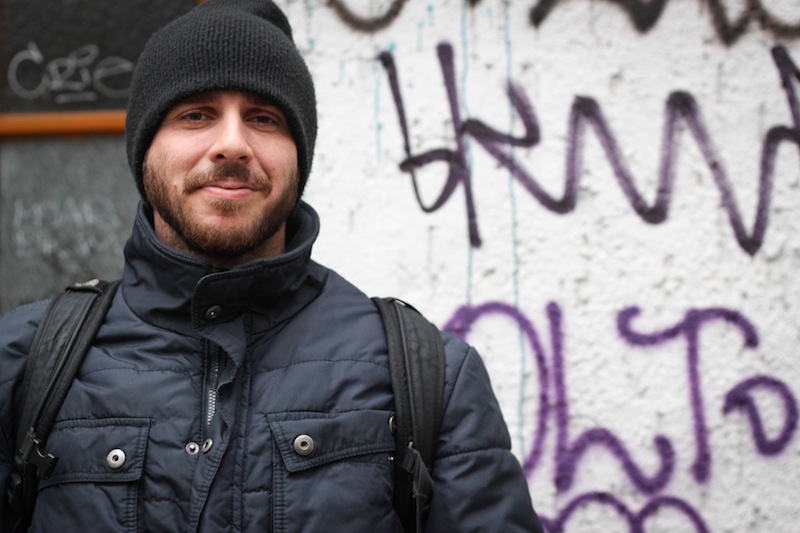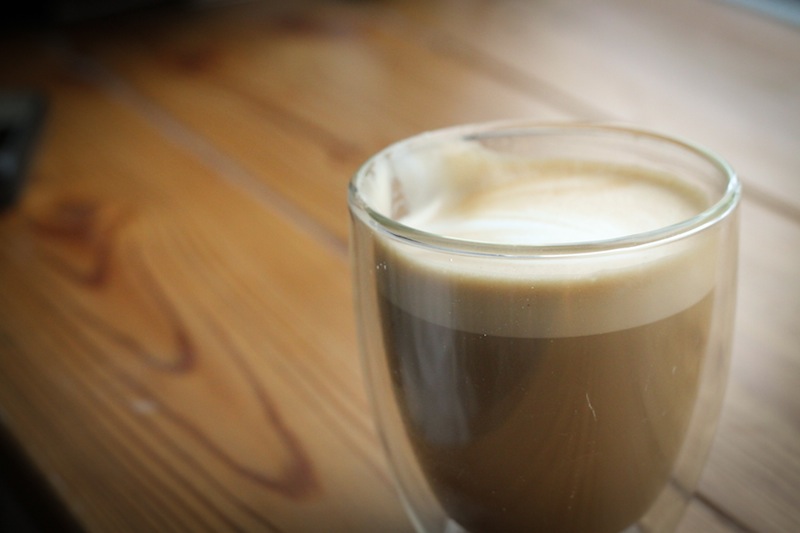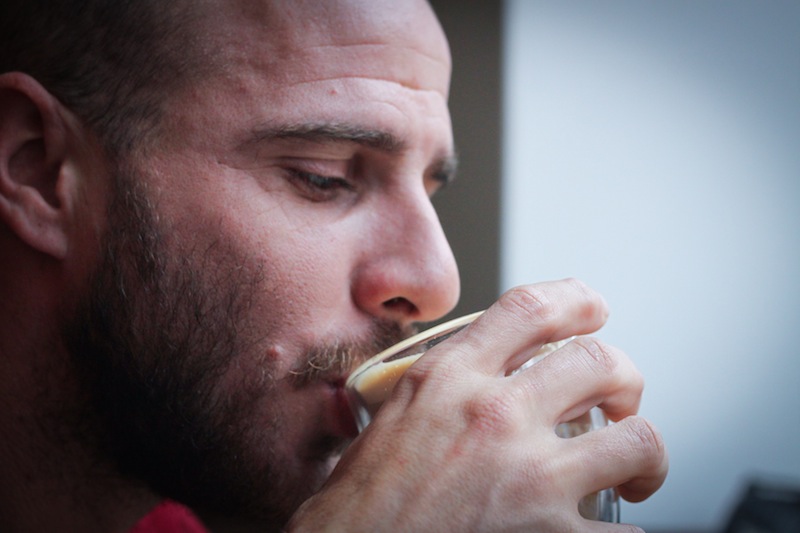Around the World in… As Many Days as it Takes
March 8, 2015

An Interview with Jordi Garcia Rodriguez, founder of No Solo Travel Chronicles
I’ve met so many interesting people in Berlin whose projects I admire and whose creativity inspires me. My friend Jordi is one of them. We met a little over two years ago, probably at the Späti, right when David and I first started dating. That summer, every weekend began at the Späti. It’s nothing special – a convenience store, a bodega selling drinks and candy and tobacco. There’s a Späti on every other corner in Berlin. But this one captured our attention, perhaps because it was centrally located on Maybachufer, close to bars where we could dance. Perhaps because there was a small wooden table outside where we could sit or a bathroom inside to use. For whatever reason, those summer weekends always started at the Späti with cold bottles of Tyskie and the dusky smell of hand-rolled cigarettes.
We were a diverse and international crew. Usually there were at least three languages bouncing back and forth across the table, and everybody’s interests were varied. But that kept things exciting.
Jordi’s project was to travel around the world on his motorcycle. He’d just made it official: No Solo Travel Chronicles, a type of personalized, interactive journalism. You could ask him to find something from another country for you or document an experience you’d love to have but couldn’t for whatever reason. Along the way, he’d film his travels and write about the people he met and experiences he had, creating an interconnected global network.
The summer ended, as all things do, and Jordi left for Turkey, the first stop on his around-the-world journey. Even the next summer, we didn’t go back to the Späti again, as if its whole magic had been used up in those months.
When Jordi came back to Berlin to earn some more money before starting the next leg of his journey, we met in different places and started talking about collaborating on joint projects. Food is such an integral part of culture, and food experiences shape so much of our daily interactions with others. Why not join forces? After all, we’re both telling stories.
A few weeks ago, when the weather was more winter than spring, we met at a café near Hermannplatz to drink coffee and talk and make plans.
Lyz: How did you come up with the idea for No Solo Travel Chronicles?
Jordi: It was actually because of my aunt. She’s a biologist who works in the botanical gardens in Barcelona, and she’s always looking for plants from different places. I told her, “I’m going traveling in Africa. If you need any plants, just let me know. I’m going from Cape Town all the way up to Ethiopia.” When I got to Ethiopia, she asked me to look for a plant. She even sent me a picture and GPS coordinates. I found the plant for my aunt, and that’s where the idea for No Solo Travel Chronicles, a more personalized and profound way of informing and documenting, comes from. The idea is that you can get to me through my website, and ask me what you want me to look for.
Do you think of it as an exchange of goods or expect anything in return?
The idea is to do it for the sake of doing it, not because I’m expecting anything. I believe information should be free, and nobody should have to pay for it. If I can exchange for skills or things I need along the way, I will. But the ideas, the information has to be free. I’m doing it for the love. But you have to say that in brackets, because I still need to pay for food and travel.
What’s the best part of being on the road?
The movement itself. When you’re moving, you see things with different eyes. Everything is new, and you embrace it. It’s much bigger than if you were to stay in one place for a longer time. All the feelings you had in the beginning fade away, because you get used to it. The unfamiliarity of places, your feelings, of everything when you’re moving around – that’s what’s exciting. On the other hand, you’re leaving behind a life you had. It’s hard, but you get through it.
Does NSTC have an end date, or is that too far away to think about?
It’s not that far away and not that close by. I don’t plan to end it. It’s called No Solo Travel Chronicles, because it’s not only about me, it’s about everyone else – you, the people on the internet, the ones beside me in whatever country I’m in. I’ve always thought you don’t settle down in a place, you settle down with a person. That person will be my house. It doesn’t matter where we are. If she wants me, I’ll go everywhere with her, and she’ll go everywhere with me. In any case, it’s not like settling down is going to break No Solo Travel Chronicles. I don’t think so anyway.


In all of your travels, how have you experienced food shaping culture first-hand?
The best part, of course, is eating with people. In Ethiopia, for example, when you go to a restaurant, someone sitting there will say, ‘Come and sit with us.’ Just like that. So you sit and eat with them. It’s a very sharing culture.
In some places I’ve been, they invite you for dinner, and everyone sits together. In others, they let you eat alone because you’re a foreigner. When I arrived in Malawi, for example, a family invited me in to eat. They were a big family with a lot of kids, but I think they cooked all the food they had for me. They didn’t eat that night. I ate alone in their little room with candlelight and an oil lamp. When I said, ‘Come and eat with me,’ they refused.
In another village, they gave me a big, green bucket with a lot of little mangoes in it. They sat me down in front of the fire, and all the kids in this little village, about fifteen of them, sat there just looking me, watching me eat the mangoes. So I asked if they wanted some. One of them, the bravest one, stood up, grabbed a mango, and said, ‘I would like it.’ ‘Take it,’ I said. Then everybody came and grabbed a mango. When the elders came and asked what they were doing, the kids just ran away with their mangos saying, ‘He gave it to us!’ It was funny, but it also made me realize that they’d given me all the food they had for that day.
You worked in a restaurant when you were in Turkey. What was it like working at the other end of the dining spectrum?
It’s good. I’ve done it many times. It’s hard work, but you learn a lot washing dishes. You can learn a lot of the language in the kitchen, even from the dirty jokes they tell. You know only a couple of words, and you’re just learning how to talk and you ask, ‘How do you say this, how do you say that?’
What’s one of the strangest things you’ve eaten on your travels?
I had snake once. I was in Yangon, Myanmar, on my way to trade money on the black market, and the taxi driver told me you could eat snake there. I walked to different restaurants in that part of town, which was a bit dirty and gray, and asked if I could see the snakes, but everyone said no. After two hours of walking around, I decided to try just one more place. I went up the stairs and looked inside for fish tanks. When I saw them, I went running towards them… and found lobsters. I’d been deceived. Suddenly this little Burmese guy came up to me and asked what I wanted. I asked if they had snake, and the guy, who was maybe 1 meter 55 and old, said, ‘Wait a second.’ He took me back to the kitchen, and asked the guy there if they had snake. I looked at him, and he looked at them. They said yes, and when I asked if I could see it, they said yes again.
There was a white door next to where they were standing. The man opened it with a key and turned on this shaky fluorescent light. We went all the way down a spiral staircase. At the bottom was another bulb hanging off the ceiling, and the ground was soggy and full of pallets. It smelled of rot and humidity. We kept walking, and the guy used another key to open another door, and inside was a cage full of metal nets. I opened the door to the cage, and he got out another key and opened one of the nets. He used a tool to open the door and grab the head of the snake so it wouldn’t bite, because it was poisonous. He cut off the head, put the blood in a bowl, mixed it with whiskey, and we drank it. Then they cooked the snake. It was illegal, of course.
How was it?
Bony. You can get it fried or in soup. I should have gotten the soup.
I have another story about food, this time from Vietnam. I was in Hanoi, waiting for the train to take me to a mountain range in the north. I was sitting in a little shed where they sold pork skewers and other things like that. I decided I wanted a boiled egg, and the waitress asked if I wanted the small one or the bigger one, making animal sounds, so I’d know what animal was in each. But of course, those sounds are different in Vietnamese, so I had no idea what she was saying. I just said, “I want the big one.” I’d eaten the rest of my food before I realized the egg hadn’t come out yet. It had already been 15 or 20 minutes – where was the egg? When, I turned around, I saw it on the grill, shell and all. They put the egg in a bowl and opened it for me. Inside was a little duck embryo with eyes, ears, and a beak. There’s a special seasoning you use because the taste is so strong. Then you use a spoon to eat it along with the bones, head, eyes and beak. You want to know how that tastes? Slimy.
Was it hard to eat something with a beak and face?
Actually, no. I had more difficulty swallowing crickets – I couldn’t get the idea that they were bugs out of my mind. This was ok, because it was a bird, and we eat birds, we eat chicken. In your mind, you think, it’s just a little chicken.
My last story is from the streets of Malawi. I often ate at street-side stands, where they cooked on big, hammered metal plates set over the fire. You could buy goat fried in oil that looked dark black, like motor oil, for around 20 kwacha. They’d fry it and cut it up for you right there and serve it with salt. When I asked for chips, they made them for me in the same oil. Once, I asked for fried eggs. The guy got a little plastic bag and put the eggs inside the bag and tied it up. Then he dropped the plastic bag into the boiling oil. The plastic melted and just the eggs were left.
Are you sure you weren’t just eating melted plastic on your eggs?
Could be. That’s probably why the oil was so black.


Where do you plan to go next?
Everywhere. My motorbike is in Greece, and I have to go pick it up. But I also need to make a lot of money, so I don’t have to come back for a while. First, I’ll get my bike in Greece, then I’ll go to Turkey to visit friends at the restaurant where I was working. From there, I’ll go to the Caucuses, Russia, central Asia, and Mongolia to spend a Siberian winter there. Then to Alaska, North America, Central America, South America, South Africa, the West coast of Africa, all the way up to Europe again. That’s the idea, but we’ll see. If the strings of life don’t pull too hard, that’s what’s going to be happening.
In all your travels, where have you eaten the best food?
It’s relative. It depends on the time, the moment, or what you’re experiencing. For example, say you’re on a nice beach and you’ve just made love to your girlfriend. Then you eat a pineapple, and that pineapple is the best pineapple you’ve ever had, because it goes along with what you were doing before. You can have one of the best dishes in the world, but if you’re in a bad mood, then the food won’t taste as good as it would if you’d just had a great kiss. The best food can be the simplest thing, and then it can taste like glory.
Stay tuned next week for the first installment in our video series: Eating Berlin. And check out No Solo Travel Chronicles at nosolotravelchronicles.com.
Very interesting stuff! I definitely couldn’t do it. :) That’s why we live vicariously, right?